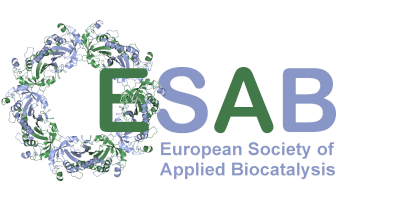NMR monitoring of compartmentalized catalysis using multi-layered hydrogels
Abstract
Segregated chemical reactions are essential for biological function. We have demonstrated the potential of using multi-layered hydrogel assemblies as a means to mimic segregated reaction cascades. Glucose oxidase, catalase, and urease were localized to individual layers in a hydrogel while substrate conversion (glucose to gluconate, urea hydrolysis) were monitored by proton nuclear magnetic resonance (NMR). With a working sample volume of 3 microliters, this approach allowed enzyme kinetic analyses starting with 0.3 and 3 micromole (glucose, urea) of starting material. The relative position of the enzymes in the hydrogel assembly was observed to influence reaction dynamics, offering a potential method to design reaction cascades with increased complexity. This talk will describe the development of the microfluidic platform that enabled the programmed assembly of the hydrogels while simultaneously allowed for high-resolution NMR measurement.
About the Speaker(s)
 Dr. Neil MacKinnon obtained his BSc in chemistry from the University of Toronto in 2004. He continued at the University of Toronto and obtained his PhD (chemistry) in 2009 under the supervision of Prof. Peter Macdonald. He then moved to the University of Michigan and performed his post-doctoral work together with Prof. Ayyalusamy Ramamoorthy, before joining the group of Prof. Jan Korvink at the University of Freiburg as a group leader in 2013. In 2015 the group moved to the Karlsruhe Institute of Technology where he continues as a group leader. His research interests revolve around developing and using nuclear magnetic resonance (NMR) methods to investigate small, active systems. Here, small refers to dimensions on the micron length scale, while active systems refers to chemical, biochemical, or biological systems performing their work while NMR measurements are simultaneously monitoring their active state. With the improved methods and hardware, the aim is to obtain molecular profiles of large sample numbers with measurement resolution on the order of seconds.
Dr. Neil MacKinnon obtained his BSc in chemistry from the University of Toronto in 2004. He continued at the University of Toronto and obtained his PhD (chemistry) in 2009 under the supervision of Prof. Peter Macdonald. He then moved to the University of Michigan and performed his post-doctoral work together with Prof. Ayyalusamy Ramamoorthy, before joining the group of Prof. Jan Korvink at the University of Freiburg as a group leader in 2013. In 2015 the group moved to the Karlsruhe Institute of Technology where he continues as a group leader. His research interests revolve around developing and using nuclear magnetic resonance (NMR) methods to investigate small, active systems. Here, small refers to dimensions on the micron length scale, while active systems refers to chemical, biochemical, or biological systems performing their work while NMR measurements are simultaneously monitoring their active state. With the improved methods and hardware, the aim is to obtain molecular profiles of large sample numbers with measurement resolution on the order of seconds.
